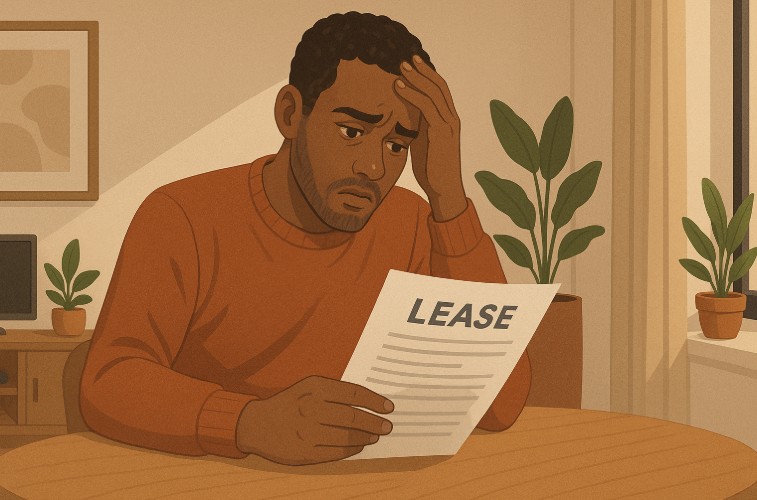Are you wondering what kind of identification you need to fly within Canada? Whether you’re travelling for business, leisure, or family reasons, having the correct ID is essential to ensure a smooth airport experience. Domestic flights in Canada have specific ID requirements that apply to all travellers, including Canadian citizens, permanent residents, foreign nationals, and even minors.
Understanding these requirements beforehand can help you avoid last-minute complications or even denied boarding. With updated travel policies and strict ID verification processes at Canadian airports, it’s more important than ever to bring valid documentation that complies with federal travel regulations.
In this guide, you’ll learn exactly what is accepted, how many pieces of ID are needed, and what to do if your ID is lost, expired, or doesn’t match your ticket. Let’s clear up the confusion so your next domestic flight goes off without a hitch.
Why Is Identification Required for Domestic Flights in Canada?

Every passenger travelling by air within Canada must undergo identity verification before boarding. This mandatory process serves several purposes and helps ensure a secure and organized air travel system across the country.
It’s all about ensuring the identity of travellers matches their ticket and preventing unlawful or unauthorized individuals from boarding flights. Identification helps airlines, airport security, and federal authorities confirm that your name, date of birth, and personal information align with what’s stated on your boarding pass.
Here’s why your ID is important:
- It ensures your name matches the one on your boarding pass
- It confirms your legal identity to comply with federal travel laws
- It enables faster security screening at airports
- It helps prevent identity fraud or misuse
- It allows verification of age for discounts or special services (like unaccompanied minor flights)
Identity verification is especially vital for those travelling without a passport, using provincial IDs, or with limited travel history. The government mandates that all domestic air passengers provide valid identification as a layer of safety and consistency.
Ultimately, having your proper ID with you not only helps keep travel safe but also saves you from being delayed or denied at check-in or boarding. Make sure your ID is current, government-issued, and matches the name on your flight booking to avoid any issues.
What Are the General ID Requirements to Fly Within Canada?
If you’re flying domestically within Canada, you need to carry either one valid piece of government-issued photo ID that shows your full name and date of birth, or two valid pieces of government-issued non-photo ID, both containing your name, and at least one showing your full name and date of birth.
You don’t need a passport for flights within Canada, but the ID you bring must be valid, unexpired, and issued by a Canadian federal, provincial, or territorial government.
Here’s what qualifies:
- One piece of photo ID with your full name and date of birth (e.g., Canadian passport or provincial driver’s licence)
OR - Two pieces of non-photo ID that are government-issued. Both must contain your name, and at least one must include your date of birth.
The document(s) must also:
- Be in either English or French. If not, a certified translation is required
- Not be damaged or expired
- Contain consistent information between both pieces if using two non-photo IDs
It’s important that the names on your identification match the name exactly as it appears on your ticket. If there’s a mismatch, boarding may be denied. So always double-check your name spelling and ensure the ID is updated if you’ve changed your name recently due to marriage or other legal changes.
Which Photo IDs Are Accepted for Domestic Air Travel in Canada?

When using a single photo ID for domestic air travel in Canada, the document must be government-issued, valid (not expired), and clearly display your full name and date of birth.
Here are acceptable photo IDs for flying within Canada:
- A valid Canadian passport
- A driver’s licence issued by any Canadian province or territory
- A health card with a photo issued by a province or territory
- A Certificate of Indian Status
- A valid foreign passport
- A NEXUS card
- A Canadian permanent resident card
- A federal or provincial employee identification card with a photo
- Canadian military identification
- A firearms licence
Each of these IDs meets the Canadian travel security requirement for photo identification, as long as the information is up-to-date and legible.
The key details required include:
- Full name
- Date of birth
- A clear and current photograph
- Signature, in some cases
If your ID does not have a photo, you’ll need to use two pieces of non-photo ID, as discussed in the next section. Always verify the condition of your ID ahead of time. Damaged, worn, or unreadable documents can be rejected at the airport.
Can You Travel with Two Non-Photo IDs?
Yes, you can travel within Canada using two valid pieces of government-issued non-photo ID if you do not have a photo ID. However, there are conditions you must meet.
Each document must be valid and issued by a Canadian federal, provincial, or territorial government. Both documents must display your name, and at least one must also include your full date of birth.
When it’s Allowed?
You can use this option if you don’t have a photo ID or have lost access to one. It’s ideal for those who are new residents, recovering from a stolen wallet, or haven’t yet received their official government photo identification.
What Documents Are Acceptable as Non-Photo ID?
Some acceptable non-photo documents include:
- A provincial health card (non-photo)
- A birth certificate
- A Record of Landing Form
- Immigration documents (e.g., work or study permits)
- A federal police identification card
- A firearms licence
- A government employee identification card
The documents must be official and legible.
Conditions both documents must meet:
| Requirement | Document 1 | Document 2 |
| Must include your full name | Yes | Yes |
| Must be valid and government-issued | Yes | Yes |
| One must include date of birth | Yes (at least one) | Not mandatory |
| Must be in English or French | Yes | Yes |
When travelling with two non-photo IDs, ensure the name on both documents is consistent and matches your flight booking. It’s also wise to call your airline beforehand to confirm the acceptance of your documents, especially if one is less common, like a Record of Landing.
This ID option is legitimate, but always confirm both documents meet the criteria and are in good condition to avoid delays or complications.
What Are the ID Requirements for Minors Flying Within Canada?

Minors flying within Canada are also subject to identification requirements, although these may differ slightly based on the airline and the age of the child.
Children under 18 are not always required to present the same types of ID as adults, but they should carry documents that confirm their full name and date of birth. A birth certificate is often the most accepted form for minors, particularly for unaccompanied travel.
Rules for Passengers Under 18
If the minor is travelling alone or without both parents/guardians, they may be asked to present additional documentation such as a consent letter or legal guardian form. Airlines have different policies, so it’s important to check with them directly.
- ID is not always mandatory for minors, but it is highly recommended
- Airlines often require a guardian to accompany the child to the gate and at the arrival terminal
- A minor without a proper ID may be refused boarding
Examples of Valid ID for Minors
Acceptable documents include:
- A birth certificate
- A passport (Canadian or foreign)
- A provincial health card
- Immigration documents or study permits if applicable
- Letter of permission if travelling without parents
Airline-specific Recommendations
| Airline | Recommended ID | Additional Requirements |
| Air Canada | Birth certificate or passport | Consent letter for unaccompanied minors |
| WestJet | Birth certificate or provincial ID | Check-in with a guardian is required |
| Porter Airlines | Any government-issued ID | Contact info for the receiving adult is needed |
Always ensure the ID documents are valid and not expired. For minors travelling internationally, stricter rules apply. However, for domestic flights, these general guidelines apply broadly unless otherwise stated by the airline.
What If You Don’t Have Canadian Identification?
If you’re not a Canadian citizen and you’re flying within Canada, don’t worry—you can still board your domestic flight if you present the correct alternative documents. The Canadian government permits foreign nationals to use valid, government-issued photo identification from their country of citizenship.
Acceptable identification includes:
- A valid foreign passport
- A NEXUS card
- A permanent resident card issued by the United States
- An enhanced driver’s licence issued in the U.S.
- Any document listed under Canada’s Immigration and Refugee Protection Regulations
Key requirements for these documents:
- They must be valid and unexpired
- Must show your full name and date of birth
- Should include a photograph
- Must be in English or French, or include a certified translation
It’s critical to ensure that your travel ID matches your flight reservation. Always check with your airline before your travel date to confirm if your foreign-issued document meets all domestic flight requirements. Being proactive avoids last-minute issues at the airport.
What Happens If Your ID Is Lost or Stolen Before a Flight?
Losing your ID right before a flight can be a stressful experience. However, there are some options available that may still allow you to fly within Canada.
According to Canadian air travel regulations, passengers who cannot present standard identification due to loss or theft may be subjected to additional identity verification steps. These steps fall under the Secure Air Travel Regulations, and your airline will typically guide you through them.
Here’s what you can do:
- Contact your airline immediately
- Explain the situation to a security agent at check-in
- Be prepared to answer personal verification questions
- Provide any alternate documentation you have (e.g., digital copies, secondary ID)
Alternative documents that may be accepted include:
- A digital copy or photo of your ID
- Police report confirming the ID was lost or stolen
- Secondary documents that can verify your identity indirectly
These options are evaluated on a case-by-case basis, and approval is not guaranteed. To avoid being denied boarding, you should arrive early at the airport, notify staff immediately, and comply fully with any identity confirmation process. The earlier you act, the better your chances of boarding your flight successfully.
Does the Name on Your ID Need to Match the Ticket Exactly?

Yes, it is crucial that the name on your ID matches the name on your boarding pass. Discrepancies, even minor ones, can lead to delays, additional questioning, or being denied boarding.
Why is this important?
- Airlines and security staff verify your ticket using your ID
- A mismatch can be seen as a potential security risk
- It ensures that tickets are not transferred between individuals
Here are a few tips to ensure consistency:
- Use the same name format (first, middle, last) on your ticket as it appears on your ID
- Avoid using nicknames, initials, or abbreviations unless your ID uses them
- If you’ve recently changed your name, ensure your ticket matches the name on your current ID
- For a name change due to marriage or legal purposes, carry supporting documents if needed
If you notice a name mismatch before your flight, contact the airline immediately to amend your booking. Corrections can often be made before check-in, but may not be possible at the airport counter. Always double-check spelling when booking to avoid costly changes or travel issues.
What IDs Are No Longer Accepted for Flying Within Canada?
Some forms of ID that were once commonly used are no longer valid for domestic air travel in Canada. These changes were made to improve security and prevent misuse.
IDs That Are Not Accepted
- Hunting licences
- Boating permits
- Fishing licences
- Library cards
- Social Insurance Number (SIN) cards
- Membership or loyalty program cards
- Student ID cards (unless government-issued)
Why Are These Not Accepted?
- They are not government-issued for identity purposes
- They lack necessary information like date of birth or photo
- They are easy to forge or duplicate
- Some are not issued with a standardized verification process
If you’re uncertain whether your document qualifies, the best course of action is to bring a passport, driver’s licence, or another clearly acceptable government-issued ID. It’s better to be over-prepared than risk being turned away at the boarding gate.
Acceptable IDs for Domestic Air Travel in Canada
Below is a comprehensive table to help you understand which forms of ID are valid for flying within Canada. Each option must be valid and clearly state your full name and date of birth.
| Type of ID | Photo Required | Accepted for Travel | Notes |
| Canadian passport | Yes | Yes | Must be valid and current |
| Provincial or territorial driver’s licence | Yes | Yes | Must show full name and DOB |
| Health card (with photo) | Yes | Yes | Accepted if issued with photo |
| Certificate of Indian Status | Yes | Yes | Issued by Indigenous and Northern Affairs Canada |
| Foreign passport | Yes | Yes | Must be valid and in English or French |
| NEXUS card | Yes | Yes | Accepted for identity confirmation |
| Permanent resident card | Yes | Yes | Valid for non-citizens |
| Birth certificate | No | Yes (with second ID) | Must be paired with another valid ID |
| Health card (no photo) | No | Yes (with second ID) | Needs additional ID showing DOB |
| Immigration documents | Varies | Yes | Work/study permits accepted |
| Firearms licence | Yes | Yes | Must be issued by government |
Always check with your airline if you have questions about a specific document. Keeping physical and digital backups is a smart way to be prepared.
When Preparing Your ID for Air Travel?

Before you head to the airport, it’s essential to double-check that your ID is ready, valid, and matches your ticket. These last-minute checks can save you from being delayed at security or denied boarding altogether.
Important reminders:
- ID must be valid and not expired
- Information must be legible and clearly display your full name and date of birth
- Your ID must be issued by a federal, provincial, or territorial authority
- If your ID lacks one of the required elements (photo, DOB, name), bring a second valid piece to meet requirements
- Avoid IDs that are damaged, torn, or altered
- The name on your ticket must match the name on your ID exactly
Additional tips:
- Photocopies are not accepted for boarding, unless part of a passport application process
- Always have a backup plan if you lose or forget your ID (such as digital records or secondary documents)
- Confirm ID requirements with your airline if you’re using documents outside the norm
Keeping your ID in a secure but accessible place ensures you’ll be ready for security screening and boarding. A few extra minutes of preparation can go a long way in preventing travel disruptions.
Can You Use Your Passport as ID When It’s Expired?
Using an expired passport as ID for domestic flights is only allowed in limited cases, and only under strict conditions. Generally, your ID must be valid and current. However, certain exceptions exist if you’re using the passport as identification for purposes like applying for a new one.
You may be allowed to use your previous Canadian passport if:
- It expired less than one year ago
- It was originally valid for five years or more
- It has not been damaged, reported lost, or stolen
It is not acceptable if:
- It was a limited-validity passport (less than 5 years)
- It expired more than one year ago
- It is physically damaged or altered
If accepted, the passport must still match your name on the ticket and show your date of birth. Always bring an additional document if your passport is expired to strengthen your case.
Are Photocopies of IDs Acceptable at the Airport?
Photocopies of IDs are not accepted for airport security or boarding flights in Canada. However, photocopies may be used when applying for new identification documents like passports.
When Submitting a Photocopy for a Passport Application?
- You must copy both sides of the document
- The copy must be signed and dated by a guarantor or signing official
- The document must clearly show your name, photo (if applicable), date of birth, and other required info
At the airport, only original, valid identification documents are permitted. Even high-quality copies or digital scans are not substitutes for the real thing when clearing security or boarding. Always carry your physical ID with you.
Conclusion
Travelling within Canada is straightforward when you’re well-prepared with the right identification. Whether you’re using a driver’s licence, passport, or a combination of two valid government-issued documents, knowing what is acceptable ahead of time is crucial.
For minors, foreign nationals, or those without standard IDs, specific rules apply, and understanding them will ensure a smoother airport experience.
Keep in mind the key factors: your ID must be valid, issued by the proper authority, and match the name on your boarding pass. By following these guidelines, you’ll avoid common pitfalls and ensure that your trip begins stress-free. Check with your airline if unsure and always keep a backup option ready.
FAQs
Can I use my health card to fly within Canada?
Yes, if your health card includes a photo and is issued by a Canadian province or territory, it can be used as ID for domestic flights.
What ID does a teenager need to fly within Canada?
Teenagers should carry a birth certificate, passport, or health card, especially when travelling alone or under special airline programs.
Is a driver’s licence enough to board a domestic flight?
Yes, a valid driver’s licence that includes your name and date of birth qualifies as acceptable photo ID for domestic air travel in Canada.
Can I fly within Canada without any ID?
No, some form of government-issued ID is mandatory. If you’ve lost it, you must go through additional identity verification as per regulations.
What if my ID is expired but recently so?
Expired IDs are not usually accepted unless you’re applying for new documentation. Airports require current, valid ID for boarding.
Can I use a non-Canadian passport to fly within Canada?
Yes, a valid foreign passport that shows your name and date of birth can be used to fly domestically within Canada.
Are school ID cards valid for air travel in Canada?
No, school or student ID cards are not accepted unless issued by a government agency with required identity elements.




